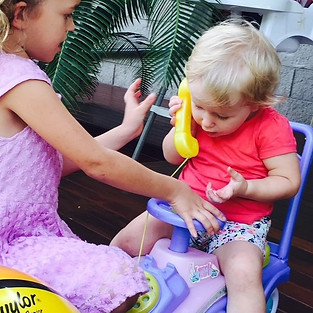
My Services
At My Speech Pathology Service, we provide assessment and therapy for a range of difficulties and concerns. We provide support to infants and children with developmental delays and disorders, people with disabilities and adults with acquired difficulties. Conditions that we have experience in supporting are varied, including but not limited to:
-
Autism
-
Intellectual Impairment
-
Cerebral Palsy
-
Downs Syndrome
-
Spina Bifida
-
Cleft Palate
-
Hearing Impairment
-
Neurodegenerative conditions such as Parkinson's Disease
-
Muscular Dystrophy
-
Genetic and Chromosomal based conditions
Speech refers to the sounds that are used in words and how we produce them. When we have difficulties producing sounds, other people can have difficulty understanding what we are saying. For example, a child who hasn't developed all of their sounds for their age clearly or an adult who slurs their speech after a stroke or an accident.
Language refers to the exchange of ideas using words, usually in spoken or written form. This includes both expressing ourselves and understanding what has been communicated. For example, a child who has trouble understanding and following instructions or an adult who can’t find the right words after a stroke.

Literacy refers to reading, understanding what is read and communicating in written form. This can vary from the deciphering of sounds in words and spelling through to reading and understanding of stories and forms.
Social Communication refers to how we use language to communicate and involves interpreting and inferencing information from the context of a conversation, understanding non-verbal information (e.g. facial expression, gesture and tone of voice) and the social communication rules that are needed to develop a relationship with another person.

Augmentative and Alternative Communication (AAC) is any type of communication strategy for people with a range of conditions who have significant difficulties speaking. This may include (but not limited to) signing, gesture, picture symbols, communication books through to high tech communication devices.
Swallowing and Feeding
Swallowing is an essential part of everyday life as we swallow food, liquids, medicine and saliva. People who have trouble swallowing are at risk of poor nutrition and dehydration, while babies and children may not take in enough nutrients to support growth and brain development. Adults and children may require support with their swallowing and feeding due to difficulties controlling the muscles involved in swallowing or due to picky eating (which can be caused by a variety of other issues that are occurring simultaneously).
In children this can look like:
-
Difficulties with breastfeeding or bottle feeding
-
Coughing, choking or gagging
-
Poor endurance or fatigue
-
Tube feeding, dependency and weaning
-
Refusal
-
Difficulty transitioning to solids
-
Chewing or oral motor difficulties
-
Oral aversions or feeding aversions
-
Stressful mealtimes


Fluency
Fluency is commonly known as stuttering. Stuttering occurs when a person might repeat or elongate sounds or repeat words and phrases. Often it is first noticed when a child starts putting words and sentences together however stuttering can continue into adulthood.
Voice
Voice refers to using the vocal cords or voice box to produce speech. For example, a person who frequently loses their voice (e.g. due to overuse such as teachers) or a person who has had surgery for throat cancer.